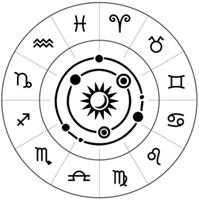Auspicious muhurta refers to the most favorable time to undertake important activities or rituals in order to ensure success, prosperity, and positive outcomes. In Hindu traditions, muhurta is determined based on the alignment of celestial bodies, including the positions of planets, the moon, and constellations, as well as specific days and times.
Key Elements of an Auspicious Muhurta:
-
Tithi (Lunar Day):
- The lunar calendar divides the month into 30 tithis, each of which is either waxing (Shukla Paksha) or waning (Krishna Paksha). Certain tithis are considered more auspicious for specific activities. For example, the third day (Tritiya) of the Shukla Paksha is considered auspicious for weddings.
-
Nakshatra (Constellation):
- The moon passes through 27 different constellations (nakshatras) during its monthly cycle. Each nakshatra has its own characteristics, and some are considered more auspicious than others for particular tasks. For example, Rohini Nakshatra is highly favorable for starting new ventures.
-
Vara (Day of the Week):
- The day of the week also plays a role in determining auspiciousness. Each day is associated with a specific planet, and the influence of that planet affects the suitability of the day for various activities. For example, Thursday (Guruvara) is generally considered auspicious for educational and spiritual activities.
-
Karana:
- Karana is a half-day period within a tithi. There are 11 types of karanas, and each has a different effect. Some are considered favorable (Shubha) and others less so (Ashubha).
-
Yoga:
- Yoga is a combination of the sun and moon's positions. There are 27 yogas in total, and like nakshatras, they have different qualities. Some yogas are highly auspicious, while others are neutral or inauspicious.
-
Rahu Kala:
- Rahu Kala is a period of about 90 minutes that occurs daily and is considered inauspicious for starting new ventures. It is typically avoided when determining a muhurta.
-
Panchang:
- The Panchang (Hindu almanac) is often consulted to find the most auspicious muhurta. It provides details about the day, nakshatra, tithi, karana, yoga, and planetary positions.
How is an Auspicious Muhurta Determined?
An auspicious muhurta is typically determined by an astrologer or using the Panchang. The astrologer considers the individual's birth chart (janam kundali) along with the elements mentioned above. The goal is to find a time when all these factors align favorably, minimizing negative influences and maximizing positive ones.
Common Events for which Muhurta is Important:
- Weddings: Ensuring a prosperous and harmonious married life.
- Housewarming (Griha Pravesh): For peace and happiness in the new home.
- Starting a New Business or Venture: To ensure success and growth.
- Naming Ceremony (Namkaran): To bless the child with good fortune.
- Travel: For safe and successful journeys.
- Religious Rituals: To invoke divine blessings and ensure the efficacy of the ritual.
In summary, an auspicious muhurta is a carefully selected time that aligns with favorable cosmic influences, aiming to ensure the best possible outcome for significant activities.
Performing activities during auspicious times and adhering to muhurta (the most favorable moment) is a practice rooted in ancient Hindu traditions, particularly in Vedic astrology. The underlying belief is that time is not homogeneous; certain moments are more conducive to success, prosperity, and well-being, while others may be less favorable. Here are some reasons why performing activities during auspicious times and muhurta is considered important:
1. Alignment with Cosmic Energies:
- According to Vedic astrology, different celestial bodies (planets, stars, and constellations) exert varying influences on Earth and its inhabitants. By choosing an auspicious time, one aligns their actions with positive cosmic energies, thereby enhancing the likelihood of success and harmony.
2. Minimizing Negative Influences:
- Auspicious times are chosen to minimize the effects of Doshas (planetary afflictions) and other negative influences. This is believed to reduce the risk of obstacles, failures, or undesirable outcomes in any undertaking.
3. Cultural and Religious Significance:
- Many rituals, ceremonies, and important life events (like weddings, housewarming, starting a new business) are deeply intertwined with religious and cultural beliefs. Performing these activities during a muhurta is seen as a way of honoring and invoking divine blessings, ensuring that the event is auspicious.
4. Psychological Assurance:
- Choosing an auspicious time provides psychological comfort and confidence to individuals. Believing that the timing is favorable can reduce anxiety and increase positive thinking, which can contribute to better performance and outcomes.
5. Continuity of Tradition:
- The practice of following auspicious times and muhurta is a way to maintain continuity with traditions passed down through generations. It fosters a sense of connection with one's cultural and religious heritage.
6. Symbolism of Harmony and Balance:
- Auspicious times often symbolize a balance between various elements—cosmic, natural, and personal. By choosing the right time, individuals aim to harmonize their actions with the larger order of the universe.
Please find the most Auspicious mahurtha in 2024.


